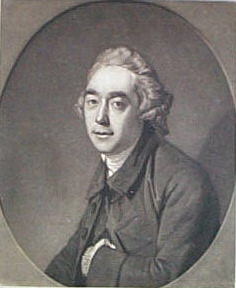George Steevens facts for kids
George Steevens (born May 10, 1736 – died January 22, 1800) was an English expert on the plays of William Shakespeare. He spent much of his life studying and editing Shakespeare's works, helping to make them easier for people to understand.
Contents
Life and Work
Early Years and Education
George Steevens was born in Poplar, London, on May 10, 1736. His father was a captain and later a director for the British East India Company.
George went to Eton College, a famous school, and then studied at King's College, Cambridge. He was at Cambridge from 1753 to 1756. After leaving university, he lived in London and later moved to a house in Hampstead Heath. There, he built up a large and important library, especially full of books from the Elizabethan era, which was the time when Shakespeare lived. He also collected many prints by the artist William Hogarth.
Working with Shakespeare
George Steevens started his work on Shakespeare by reprinting some of Shakespeare's plays that had been published a long time ago. These were called Twenty of the Plays of Shakespeare... (1766).
A famous writer named Samuel Johnson was very impressed with Steevens's work. Johnson suggested that Steevens should create a full collection of all Shakespeare's plays. This led to their joint edition, known as Johnson's and Steevens's edition, called The Plays of Shakespeare with the Corrections and Illustrations of Various Commentators (1773). This big collection had 10 volumes, but Johnson's part in it was quite small.
This first attempt to create a variorum edition (which means an edition with notes from many different experts) was updated and printed again in 1778. It was further edited in 1785 by Isaac Reed, a friend of Steevens.
Later, in 1793, Steevens decided to work on the plays again. He was very knowledgeable about Elizabethan literature, which helped him find similar passages in other books from Shakespeare's time. However, he didn't include Shakespeare's sonnets and poems in his collection because he thought readers wouldn't be interested in them.
A Clever Mind
George Steevens was known for his sharp mind and sometimes for playing clever jokes. Dr. Johnson, who was a close friend, once said Steevens lived "the life of an outlaw," but he was also generous and kind to his friends.
Steevens was very good at spotting fakes. He helped to show that the "Rowley poems" by Thomas Chatterton and the "Ireland forgeries" (fake Shakespeare documents) were not real.
He also enjoyed creating his own hoaxes. For example, he wrote a completely made-up story about a poisonous tree in Java, which fooled the scientist Erasmus Darwin. He even tricked the Society of Antiquaries of London with a fake tombstone of an old king, Hardicanute, which he claimed was found in Kennington. He had actually carved an Anglo-Saxon message on it himself!
George Steevens passed away at Hampstead on January 22, 1800. A monument honoring his work on Shakespeare was placed in Poplar Chapel.
After his death, Steevens's Shakespeare collection was re-released by Isaac Reed in 1803. This new version had 21 volumes and included extra notes that Steevens had left behind. This edition is known as the first variorum edition and was printed again in 1813.
Honours
In May 1767, George Steevens was chosen to be a Fellow of the Royal Society. This is a very respected group of scientists and thinkers.
See also
- Shakespeare's editors


